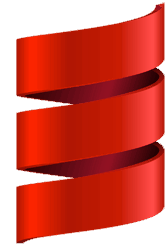I attended YOW! Sydney 2014 and thought some people might get something useful out of my notes. These aren’t my complete reinterpretations of every slide, but just things I jotted down that I thought were interesting enough to remember or look into further.
Ed Kmett (@kmett) started by asking: “What is the cost of using the wrong solutions, integrated over your entire career?” (Slides, Video)
Then he revealed that the topic he’d chosen for the talk was…
“How to be a genius”.
 He talked about a strategy for solving big problems described by famous theoretical physicist Richard Feynman (pictured):
He talked about a strategy for solving big problems described by famous theoretical physicist Richard Feynman (pictured):
- Keep a bunch of your favourite problems in your head.
- Every time you hear a new idea -> test it against one of your problems to see if it helps.
- If it does, tell people about the breakthrough, and they’ll think you’re a genius.
Note that, in Feynman’s approach, genius is attributed not necessarily to those that come up with new ideas, but often to those who figure out where to apply them.
Developers and Researchers
He noted that developers are in the business of solving problems, searching for solutions, while researchers often have solutions, but are searching for the right problems to apply them to. As a developer, it can be good to keep abreast of what researchers are discovering in hope of finding a solution to one of your favourite problems.
Memory Retention
He discussed human memory retention and the need to revisit topics over time to retain knowledge about them. The brain remembers far better information that is used or revised repeatedly. Knowing this, you can hack the brain by intentionally repeating material that you want to remember. (For example, after going to a conference, you could write a blog about the important points from each talk you went to.)
He chatted a little bit about jargon, saying that if you’re going to use jargon, you should always be willing to explain what it means.
Image credit: Richard Phillips Feynman (1918 – 1988) (unknown)



 In 2018, our team spent a lot of time working with feature flags and
In 2018, our team spent a lot of time working with feature flags and  I guess that sounds like a weird thing to just decide to do, doesn’t it? It’s actually one part of a bigger goal I have at the moment of teaching myself some practical machine learning. As part of this journey, I heard a great idea from
I guess that sounds like a weird thing to just decide to do, doesn’t it? It’s actually one part of a bigger goal I have at the moment of teaching myself some practical machine learning. As part of this journey, I heard a great idea from 
 Why are distributed transactions icebergs? It’s not because they’re cool and beautiful and you have to look under the surface to comprehend them.
Why are distributed transactions icebergs? It’s not because they’re cool and beautiful and you have to look under the surface to comprehend them. Beth Skurrie (
Beth Skurrie ( He talked about a strategy for solving big problems described by famous theoretical physicist
He talked about a strategy for solving big problems described by famous theoretical physicist  The benefits of going functional are to get to code that is: Modular, Abstract, Composable.
The benefits of going functional are to get to code that is: Modular, Abstract, Composable.